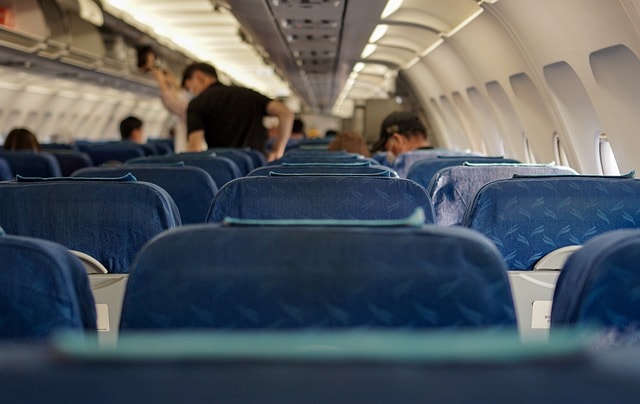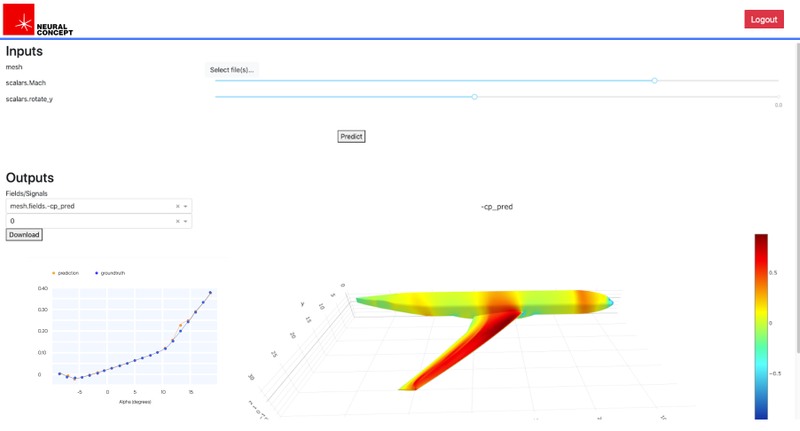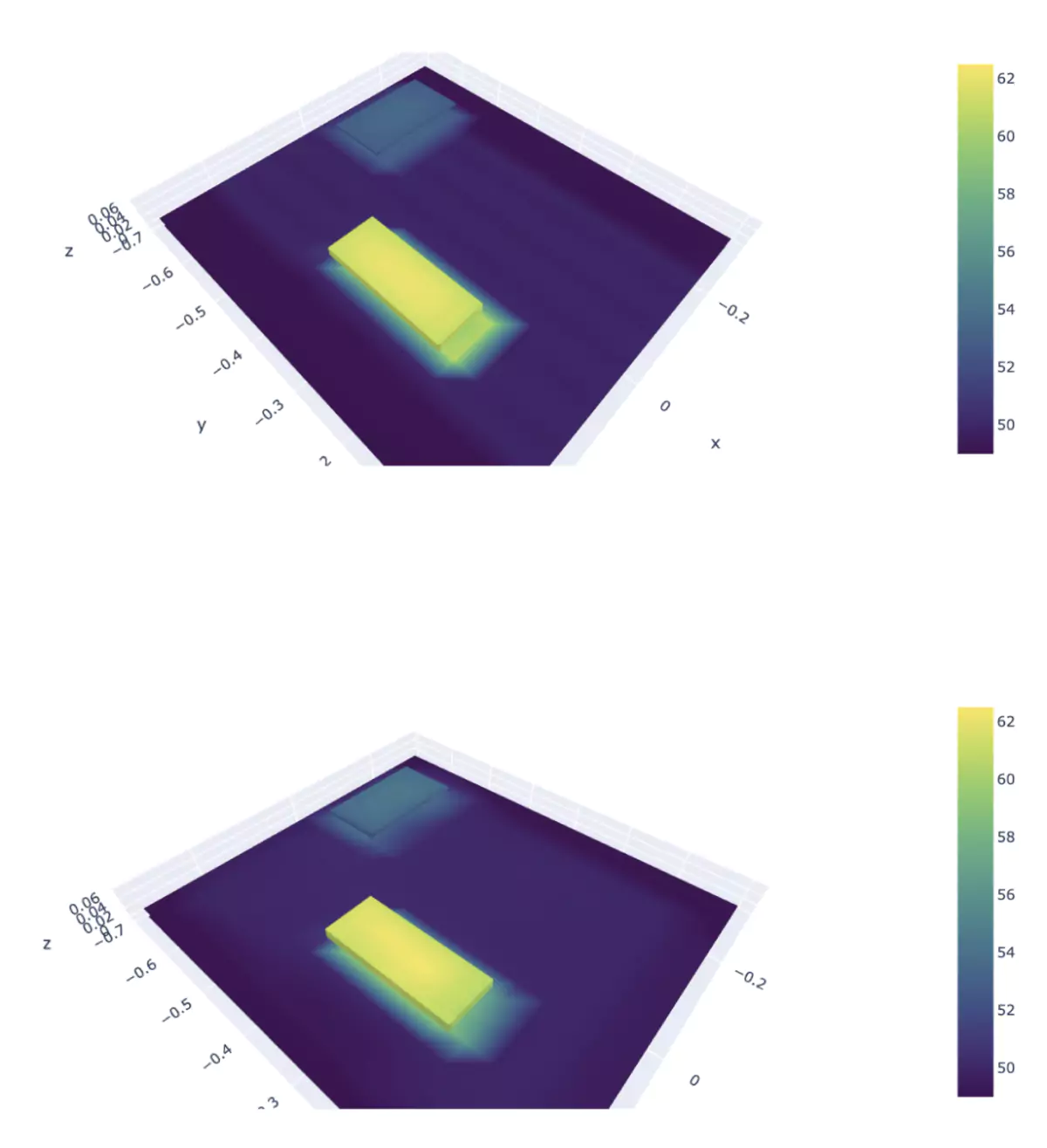AI in Aerospace Engineering: Redefining Intelligent Design

Designing aerospace systems has always involved managing trade-offs: speed versus fuel consumption, weight versus safety, and cost versus performance. Aerospace engineers are now testing AI tools that can reduce the time required for aerodynamic simulations, optimize structural layouts, and suggest design modifications much faster than traditional methods. In commercial aviation, trimming fuel consumption by just 1% can save an airline several million dollars per year across a large fleet. In spaceflight, even small weight reductions can lower launch costs by thousands of dollars per kilogram. These margins explain why aerospace firms are increasingly exploring algorithmic design support.
So, with smarter approaches to simulation, engineers are transforming design with the aid of AI.
AI is being applied in aerospace to reduce costs, enhance safety, and manage complex design and operational data, making it useful for both crewed missions and autonomous systems.
This guide explores the key applications, challenges, and AI platforms that are shaping the future of aerospace innovation:
- Applications of AI in the Aerospace Industry
- Design and Manufacturing
- Factory Automation and Maintenance
- Aerospace Operations and Flight Management
- What are the Main Issues and Concerns for AI in the Aerospace Industry?
- Data Management for AI in Aerospace
- Challenges in Aerospace Data Management
- Reliability in the Aerospace Industry and AI
- What Challenges Must Engineers in Aerospace Address when Adopting AI?
- Engineering Constraints in Applying AI to Aerospace Systems
- Key Challenges in Aerospace AI Adoption
- Use Cases for Artificial Intelligence in Aerospace and Defense
- Aircraft Aerodynamics with Neural Concept and Airbus
- Flight Envelope with Artificial Intelligence
- Thermal Effects on Onboard Electronics with Artificial Intelligence
- AI for Autonomous Systems
- AI for Operations and Maintenance
- Predictive Maintenance
- Optimized Flight Paths
- Safety Augmentation
- Automated Traffic Management
- How is AI Speeding Up R&D in A&D?
- The Role of the Neural Concept Platform
- Usability of the Platform
- Positioning of the Platform
- How is AI Changing the Role of Engineers?
- What are the Key Capabilities making AI algorithms Practical?
- Empowering Aerospace Design with the Neural Concept Platform
Applications of AI in the Aerospace Industry
AI enhances aerospace engineering by automating time-consuming computations, allowing engineers to focus on performance and safety. AI technologies are transforming the aerospace industry through advanced analytics, autonomous decision-making, and intelligent controls. They also bring challenges to companies, such as maintaining data integrity, ensuring model transparency, and adapting the workforce. Unlike the automotive and healthcare companies, A&D face unique hurdles related to safety certification, regulatory standards, and complex operations.
ML accelerates aerodynamic simulations, evaluates thousands of component geometries for weight, strength, and efficiency, and predicts operational behavior. The following sections outline how AI aids in refining designs, streamlining production, and ensuring the safety of aircraft systems. The global AI market size in A&D was valued at USD 22.45 billion in 2023 and is projected to reach USD 43.02 billion by 2030, growing at a CAGR of 9.8 % from 2024 to 2030 (source: Grand View Research).
Design and Manufacturing
- Generative design: AI algorithms explore thousands of component geometries, balancing weight, strength, and aerodynamics faster than conventional methods. For example, Boeing has patented software tools to optimize structural part profiles and utilizes AI-driven simulations to validate designs more efficiently, thereby supporting the development of lighter and stronger components.
- Intelligent robotics: AI-driven robots handle precision tasks such as drilling, painting, and assembly, thereby reducing errors and cycle times. Companies such as Airbus employ intelligent robotics to automate complex assembly lines and enhance quality control in aircraft manufacturing. For instance, at its Hamburg facility, Airbus has implemented advanced robotic systems for structural assembly, including seven-axis robots for precise drilling and Flextrack robots that move along rails installed on the fuselage. These robots contribute to improved precision, reduced errors, and enhanced efficiency in the assembly process. Similar automation breakthroughs can be observed in AI-driven 3D printing, where machine learning models optimize build parameters to improve quality consistency in additive manufacturing.
- Material discovery: ML analyzes material datasets to identify alloys and composites with superior performance for aerospace components.
- Design speed: Predictive analytics and surrogate models of the physical world allow rapid iteration of designs, addressing technical issues such as fuel optimization. An AI system that integrates machine learning, data management, and simulation enables real-world aerospace applications by supporting continuous testing and environment modeling. Collaborations like Neural Concepts and Airbus have reduced prediction time from hours to milliseconds.
- Other engineering applications: AI systems also support the thermal management of onboard electronics and computations related to the aircraft’s flight envelope.
Factory Automation and Maintenance
Modern aerospace manufacturing is increasingly relying on software solutions that integrate AI. The following points illustrate how AI software solutions for manufacturing are applied in quality control, supply chain optimization, and maintenance support, showing real-world tools and approaches that are transforming production lines and service operations.
- Quality control is critical in aerospace manufacturing, where even minor defects can have significant consequences.
- For example, Airbus has deployed AI-based computer vision systems to inspect critical structures and surface finishes, thereby improving the consistency of defect detection across production lines. The Airbus site expands on Robotics and digital transformation, as well as air-cobot collaborative inspection.
- AI algorithms now analyze images of aircraft components to detect cracks, irregularities, and other defects with unmatched speed and precision. Much of the heavy lifting in AI-driven manufacturing involves data extraction, cleaning, and preparation by data scientists before models can be trained. Discover how these advanced techniques are enhancing part quality, reducing human error, and transforming aerospace production workflows.
- Supply chain optimization: Predictive models anticipate inventory needs, identify bottlenecks, and select cost-effective suppliers to help mitigate any inefficient supply chain issues. Predictive models streamline operations in the production lines. For instance, SAP Integrated Business Planning (IBP) and Oracle Supply Chain Planning Cloud are among the top solutions used, with ML embedded, for demand sensing and prediction.
- Deploying AI at scale can enhance supply and demand forecasting accuracy by approximately 10–20%, leading to reduced safety stock and fewer last-minute part orders in the aerospace industry. McKinsey & Company reported already in 2019 that AI can improve supply forecasting accuracy by 10% to 20%, resulting in a 5% reduction in inventory costs and a 2% to 3% increase in revenue. McKinsey’s study suggests that AI has the potential to reduce forecasting errors by 20% to 50%, resulting in improved efficiency and cost savings in the aerospace sector.
- Maintenance support: Language models trained on technical manuals enable service engineers to complement their hands-on expertise by quickly locating procedures, troubleshooting issues, and reducing downtime. For instance, Siemens MindSphere integrates ML for predictive maintenance, linking manuals, sensor data, and service workflows to minimize downtime.
Aerospace Operations and Flight Management
- Air traffic management: AI systems support controllers by analyzing weather, aircraft performance, and traffic patterns, providing indications for routing and scheduling. Additionally, AI is enabling airlines to make proactive decisions in areas such as predictive maintenance and flight operations optimization, thereby enhancing safety and operational efficiency.
- Over the next decade, AI will play a central role in managing growing air traffic and mitigating disruptions as airspace density increases across commercial routes and urban air mobility corridors.
- The rise of crewless aircraft, drone deliveries, and air-taxi services will add complexity, requiring AI-assisted sequencing and deconfliction to maintain safe and efficient operations.
- Autonomous flights: Discover how autonomous flight is evolving with Intelligent Autopilot Systems (IAS), where neural networks trained on pilot data handle everything from takeoff to landing, even in challenging weather. While commercial certification is still in progress, the potential for fully autonomous jets is closer than ever. See the full story with AI drone applications.

What are the Main Issues and Concerns for AI in the Aerospace Industry?
The first concern is managing large data sets; rather than a lack of datasets, the aerospace industry could suffer from fragmentation among departments that do not communicate effectively.
Another, more general concern is making decisions related to safety by relying on AI inputs. Protecting sensitive data in AI applications is also critical to prevent unauthorized access and security breaches, as compromised sensitive data can have severe consequences. Here, humans play a crucial role before fully autonomous flight is implemented in commercial aviation, following its initial successful deployment in the automotive industry.
Data Management for AI in Aerospace
AI and ML improve how aerospace companies handle large, complex datasets:
- Supply chain efficiency: predictive models anticipate inventory needs and identify potential bottlenecks.
- Safety monitoring: algorithms analyze sensor and operational data to detect anomalies before failures occur.
- Design automation: surrogate models accelerate CFD and FEA simulations, allowing rapid exploration of design options.
Pioneering applications demonstrate how neural networks optimize crewless aerial vehicles (UAVs) by leveraging historical data, thereby enhancing aerodynamics and autonomy while respecting operational constraints.
Challenges in Aerospace Data Management
Two main issues must be addressed:
- Data fragmentation and quality → information often comes from multiple sources and formats, making integration and model training difficult.
- Security and safety → sensitive aerospace and defense (A&D) data must be protected throughout the supply chain and during external sharing, as leaks or breaches could have severe consequences.
Reliability in the Aerospace Industry and AI
Building safe AI in aerospace requires more than software testing. For instance, in flight control and navigation, even minor errors can have severe consequences. Reliability involves substantial investments in:
- reliability engineering
- risk assessment
- designs that keep humans in the loop.
Reliability engineering emerged after World War II to reduce failures in complex systems, such as aircraft and early missiles.
Today, that tradition meets AI. Human factors remain critical: poor data labeling, biased algorithms, or misplaced trust in AI guidance can all lead to failure. When pilots or engineers act on AI recommendations, the safety of the system depends on both sides: the technology and the human using it.
Explore the implications of DFR (Design for Reliability).
What Challenges Must Engineers in Aerospace Address when Adopting AI?
Adopting artificial Intelligence (AI) in the aviation industry involves ensuring safety, trust, and resilience against risks. The main issues are tied to data, model transparency, security, and broader ethical implications, all of which are vital for achieving increased efficiency.
Discover how AI is engineering’s last frontier.
Engineering Constraints in Applying AI to Aerospace Systems
AI adoption in aerospace must align with strict, safety-critical standards, similar to how healthcare ensures patient safety, automotive validates autonomous driving systems, or finance regulates algorithmic trading.
Engineers must validate AI against certification rules because any malfunction can endanger lives and aircraft integrity!

They ensure training data covers the full range of flight conditions to avoid blind spots that could lead to unsafe decisions. Models must be traceable and explainable so regulators, operators, and safety engineers can audit and justify system outputs. Additionally, across OEMs and Tier 1 companies, rigorous V&V test campaigns (including simulation, HIL, and flight trials) are now a standard way to bound AI behavior and mitigate integration risk.
Engineering teams also protect flight platforms and operational networks against cyber threats and adversarial inputs that could compromise navigation, communication, or predictive maintenance capabilities.
Ethical issues arise in the deployment of decision‑support frameworks, including defining the role of human oversight, determining the acceptable balance between automation and manual control, and clarifying accountability when intelligent technologies contribute to operational decisions.
These constraints mean advanced analytic tools cannot be treated as a “black box add‑on.” They must be designed, validated, and certified with the same rigor as avionics hardware, control software, or structural components.
Key Challenges in Aerospace AI Adoption
Use Cases for Artificial Intelligence in Aerospace and Defense
We will review use cases of AI and ML technologies in the A&D industry to enhance product quality, performance, and customer experience, paving the way for the future of technology development. Large language models are advanced machine learning tools that generate human-like text and support applications such as technical documentation, design assistance, and knowledge management in the aerospace and defense (A&D) sector. They do not possess general Intelligence and must be deployed with careful governance to ensure safety, reliability, and compliance.
Aircraft Aerodynamics with Neural Concept and Airbus
Already back in 2019, Neural Concept demonstrated an application of artificial Intelligence to aircraft aerodynamics with companies like industry leader Airbus (see figure). This was absolutely well in advance of the times.

The Neural Concept Platform was conceived as a surrogate for CAE (Computer-Aided Engineering). Airbus reduced the average time its engineers spent deploying predictive analytics to support design choices.
The companies collaborated to accelerate the engineering process and generate new design solutions across various design problems in fluid dynamics, structural engineering, and electromagnetics.
Airbus used the Neural Concept platform to reduce pressure field prediction time from one hour to 30 milliseconds, a 10,000-fold speed increase. This allows design teams to explore 10,000 more options within the same time, leading Airbus engineers to adopt machine learning in aerodynamics. The case demonstrates that AI’s ability to support designers at their desks, without requiring significant hardware investments, is a valuable asset. It highlights ‘Intelligent Aerospace’ as an accessible and efficient solution.
Currently, there are research projects on the application of neural network technology to aerodynamic shape optimization.
Flight Envelope with Artificial Intelligence
Neural Concept Shape is the first ML platform to interpret 3D shapes (CAD) and learn how they interact with the laws of physics (CAE).
Advanced computational models can emulate complex CAE simulators, making predictions in approximately 30 milliseconds, compared to the hours or even days required by previous approaches. This capability allows engineers to extract maximum value from their information assets, enabling them to explore designs with greater operational precision and effectiveness. The prominent AI features are Deep Learning and feature recognition.
- Take the example of computing a commercial aircraft’s flight envelope. While most engineers analyze only a few operating conditions, Neural Concept makes it possible to span the aircraft’s flight envelope in a few seconds over a range of velocities or angles of attack.
- The user experience with data-driven AI and ML differs from traditional approaches because operations become real-time, rather than taking hours or days to complete. Thus, the potential to explore more solutions in the aircraft design space is dramatically increased.

Thermal Effects on Onboard Electronics with Artificial Intelligence
We will summarize how an AI-based system for thermal transfer simulations of satellite panels and other development tools helped a space project. The solution can help the satellite industry address related thermal management issues with electronic systems.
- A traditional high-fidelity simulation takes about 20 minutes to run.
- The successful target was to provide a result in tens of milliseconds.
- The concept of real-time simulation can be extended to other engineering aspects affecting satellites and their payloads, such as simulating vibrations and harshness during the launch phase.
Thermal and electronic designers calibrated the tool to emulate simulations with varying topologies, like increasing chip counts.
Engineers evaluated the Neural Concept platform’s potential to replace the simulation workflow, finding it successful. They also successfully tested its ability to handle different topologies within a single dataset.

AI for Autonomous Systems
- Uncrewed Aerial Vehicles (UAVs)
- AI algorithms manage flight control, path planning, and sensor fusion in real time. Neural networks and reinforcement learning optimize navigation, obstacle avoidance, and payload operations, integrating telemetry from GPS, IMUs, lidar, and onboard cameras to maintain stable, autonomous missions under varying environmental conditions.
- Over the next three to five years, operational intelligent control layers will increasingly triage and fuse sensor and mission data from UAVs under explicit human oversight to comply with safety and certification requirements.
- Looking further ahead, next-generation coordination frameworks will enable the end-to-end orchestration of swarms and heterogeneous fleets of uncrewed platforms with minimal human intervention, operating within evolving airspace regulations and leveraging advanced autonomy to adapt to mission and environmental changes dynamically.
- Advanced weapon systems
- ML models support target identification, tracking, and engagement by processing multispectral sensor data. AI fuses inputs from radar, EO/IR cameras, and other sensors to generate precise engagement solutions. At the same time, operator-in-the-loop approaches validate decisions to comply with safety and legal constraints.

AI for Operations and Maintenance
AI in aerospace operations is no longer an “experimental” endeavor. AI is already embedded in systems that determine when components are serviced, how aircraft navigate through crowded skies, and how flight crews react to unexpected conditions. Today, intelligent control and analytics underpin route sequencing, conflict detection, and maintenance scheduling, delivering measurable improvements in safety, predictability, and system utilization.
The following sections show:
- Where engineers are integrating machine learning and control methods into maintenance, flight management, safety monitoring, and traffic coordination
- Why these applications matter for efficiency and certification in modern aviation.
Predictive Maintenance
The Maintenance, Repair, and Overhaul (MRO) ecosystem has leveraged machine learning for years to identify wear patterns and anticipate component removals, and is now expanding from component‑level models to fleet‑wide prognostics. Deep learning architectures, such as long short‑term memory networks (LSTMs), process multivariate sensor streams from engines, landing gear, avionics, and structural health monitoring systems to detect failure precursors. By integrating physics-based constraints with flight data, these prognostic models enhance fault detection accuracy, reduce unscheduled downtime, optimize the mean time between failures (MTBF), and lower operational costs.
Optimized Flight Paths
Trajectory optimization utilizes reinforcement learning and stochastic control, combining live weather, ADS-B, and ATC data to determine the minimum-fuel or time paths. It adjusts for turbulence and restrictions, deployed in Flight Management Systems.
Safety Augmentation
AI monitors flight envelopes, fuses sensors, and detects anomalies. It processes radar, lidar, EO/IR, and inertial data to flag deviations. Outputs support pilots with collision avoidance, procedures, and guidance, ensuring safety and awareness.
Automated Traffic Management
Automated air traffic management utilizes graph-theoretic models and mixed-integer programming to manage arrivals, departures, and en-route sequencing. Coupled with predictive queueing and stochastic simulations, AI boosts runway throughput, reduces separation violations, and supports dynamic reconfiguration in high-density traffic. These automated air traffic management frameworks integrate with ATC decision‑support tools and initiatives, such as NextGen (US) and SESAR (EU), which modernize air traffic management.
How is AI Speeding Up R&D in A&D?
AI helps the A&D industry accelerate R&D cycles by implementing automation.
The A&D industry accelerates research and development cycles by solving complex engineering challenges thanks to AI platforms such as Neural Concept’s, as we will see in the following sections.
The Role of the Neural Concept Platform
The Neural Concept platform is a prime example of a high-end implementation of deep learning (an AI branch inspired by computer vision principles). The Neural Concept algorithms can emulate high-fidelity CAE simulation software, yielding predictions in a few milliseconds versus minutes to hours (or even days) for CAE, with comparable professional quality.
Usability of the Platform
Professionals can easily use the Neural Concept platform right on their desks, without needing costly compute farms or infrastructure. This user-friendly approach enables them to explore numerous designs daily, either manually or automatically, saving both time and resources compared to traditional CAE software.
Positioning of the Platform
The Neural Concept platform mimics R&D simulations, producing expert-level outputs faster than traditional methods. AI simulators provide engineers with predictive insights, eliminating the need for in-depth ML knowledge and thereby reducing human errors, while also accelerating design cycles. Thus, engineers are freed from menial tasks associated with repetitive simulations, allowing them to focus on trade-offs, exploring options, and improving performance.

How is AI Changing the Role of Engineers?
Artificial Intelligence shifts engineers’ work from performing repetitive, data-intensive calculations to focusing on higher-level system decisions. By offloading computation to predictive models trained on vast amounts of data (historical simulations and design records), engineers can concentrate on system integration, performance optimization, safety validation, and lifecycle management. AI does not replace expertise; it amplifies it, enabling engineers to apply their knowledge to complex design trade-offs and operational assessments that were previously limited by computational and time constraints.
What are the Key Capabilities making AI algorithms Practical?
The following table highlights key capabilities that make AI a practical, high-impact tool for accelerating design cycles, improving accuracy, and enabling engineers to focus on critical system-level decisions.
Conclusion
Whether we need to optimize fuel consumption or ensure the safety of human beings or onboard electronics in a satellite, data-driven technology comes to the aid of the aerospace market.
Training AI to produce tools to support engineers in predictive maintenance and predictive engineering analytics can be daunting.
However, as the use cases have shown, the Neural Concept platform has been tested by industry leaders such as Airbus and other companies as a valuable solution that makes once-expensive and laborious tools accessible to any aerospace engineer’s desk.
The potential for this smart technology to deliver solutions in engineering prediction is practically limitless, thanks to the wealth of data provided by the aerospace and defense industry.
FAQs
Will AI systems take over the field of aerospace engineering?
No. It handles data analysis, optimization, and simulation, enabling engineers to focus on high-level design, safety, and compliance decisions. Human oversight remains essential for certification and the resolution of complex problems, which has a pivotal role in the reliability of AI systems.
Is SpaceX using AI technology?
Yes - SpaceX employs Machine Learning algorithms for trajectory optimization, predictive maintenance, launch simulations, and autonomous drone ship landings. Neural networks and reinforcement learning help reduce risk and improve launch efficiency.
How is NASA using AI technology?
NASA integrates AI systems for mission planning, anomaly detection, autonomous navigation, and rover operations. ML models predict component degradation, optimize energy usage, and enable spacecraft to make adaptive decisions in deep space environments.
Is AI replacing pilots?
Not entirely. AI assists with autopilot, predictive alerts, and decision support in commercial and military aircraft. Fully autonomous piloting is currently limited to drones and UAVs operating under controlled conditions, where safety protocols and human intervention are strictly regulated.
How is AI used in the defense industry?
It supports threat detection, mission planning, autonomous UAVs, and predictive maintenance. ML improves situational awareness and decision-making under high-speed operational constraints.
What are the applications of ML in aircraft design?
ML optimizes aerodynamics, structural topology, material selection, and component layout. Surrogate models reduce simulation time, while generative design algorithms propose innovative geometries beyond conventional human intuition.
How is AI used for predictive maintenance in aerospace?
It analyzes sensor data, vibration signatures, and thermal patterns to predict component failures before they occur, which is crucial in air traffic control. This reduces unplanned downtime, improves safety, and extends lifecycle management for engines, avionics, and landing gear.
What are the differences between traditional and AI-driven flight control procedures?
Traditional procedures rely on fixed control laws and human input. In contrast, AI-driven systems adapt to dynamic conditions by utilizing sensor data, learning optimal control policies to enhance stability, efficiency, and fault tolerance.
What ethical considerations come with AI in autonomous aerospace systems?
Ethical issues involve accountability, transparency, fail-safes, and adherence to international aviation laws. AI-driven decisions in autonomous systems must prioritize human safety and adhere to relevant regulations.
What challenges and limitations exist when using AI systems in aerospace simulations?
Limitations include data scarcity, model generalization errors, high computational cost, and integration with new technology and legacy systems. Simulated predictions may not fully capture real-world nonlinearities or rare events. In such cases, hybrid validation approaches are suggested.
What is the cost of implementing AI systems in aviation engineering firms?
Costs vary widely: software licensing, high-performance computing, sensor integration, data preprocessing, and specialized personnel. Small-scale pilots may cost tens of thousands of dollars, whereas full-scale deployment for aircraft design and maintenance can run into millions annually.



